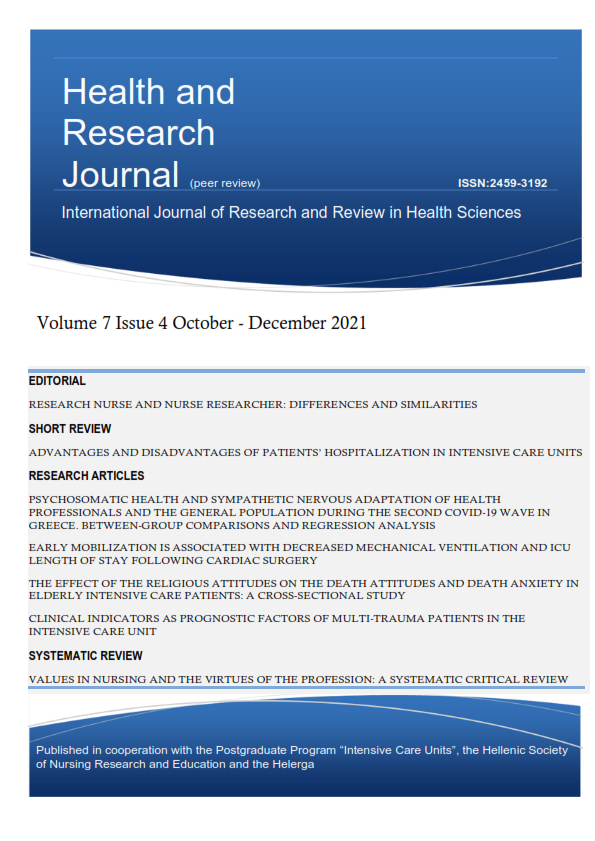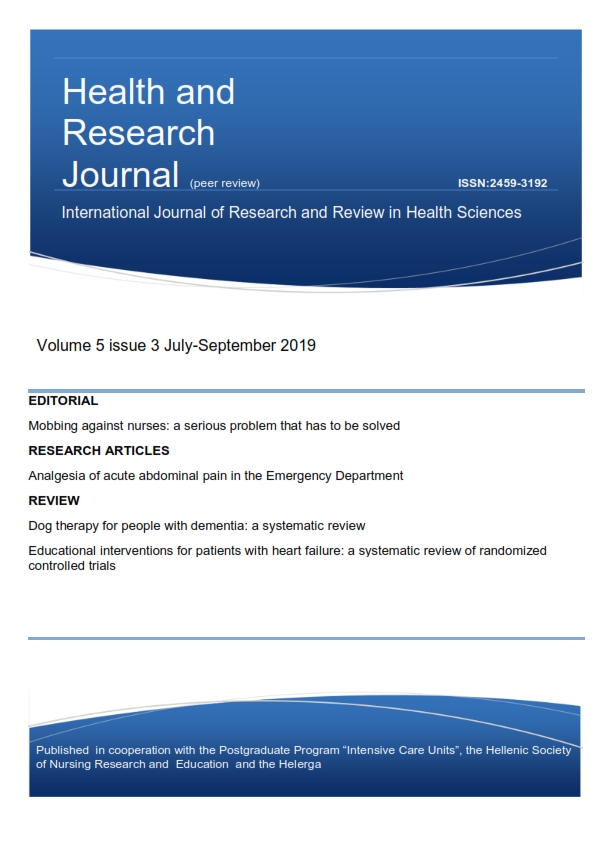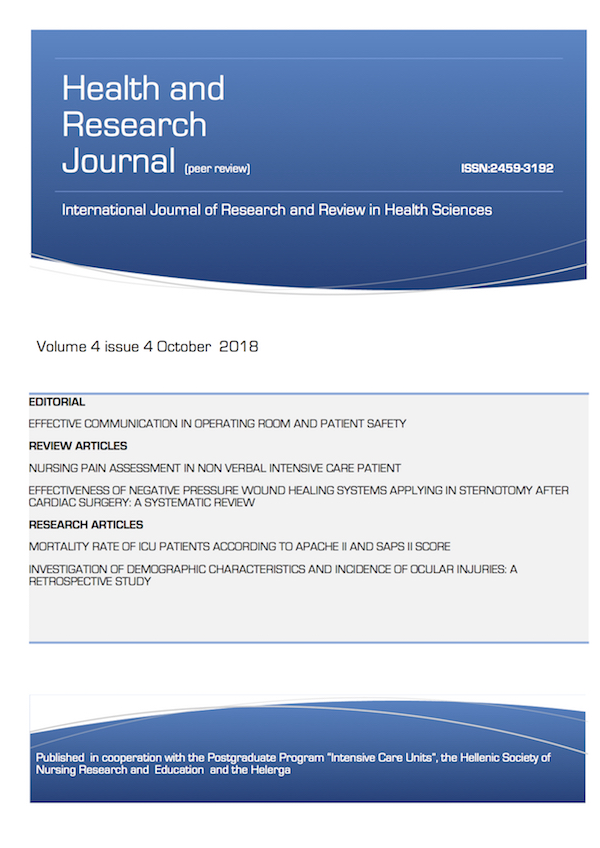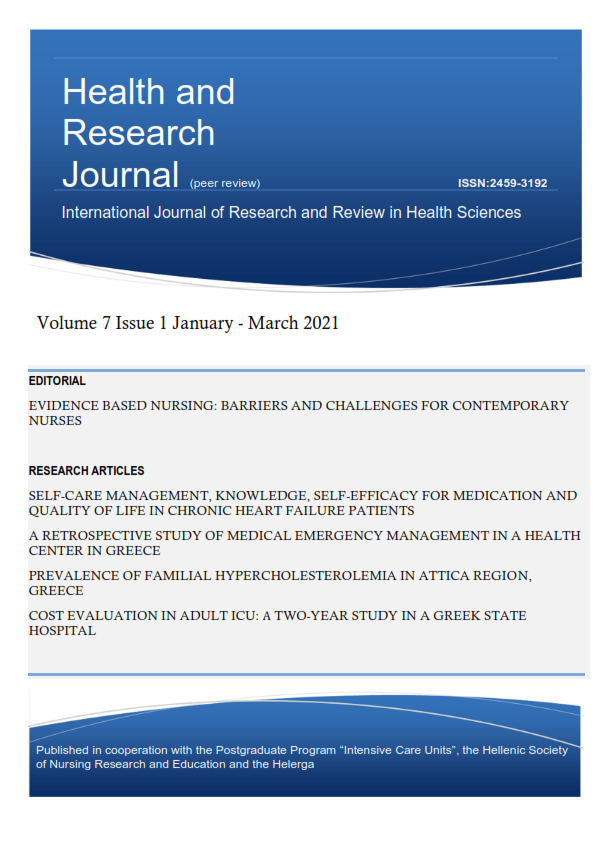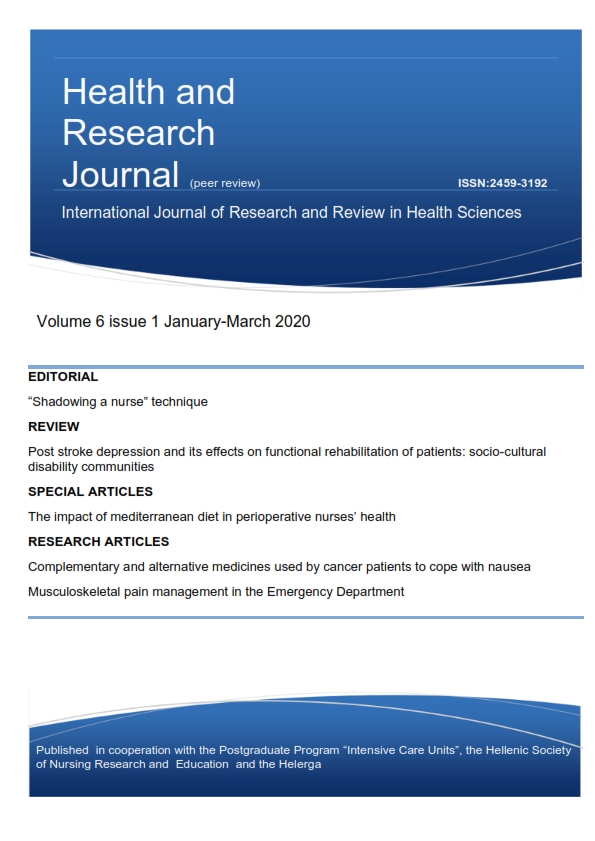The role of using a special support surface in heel pressure ulcers appearance in intensive care unit patients
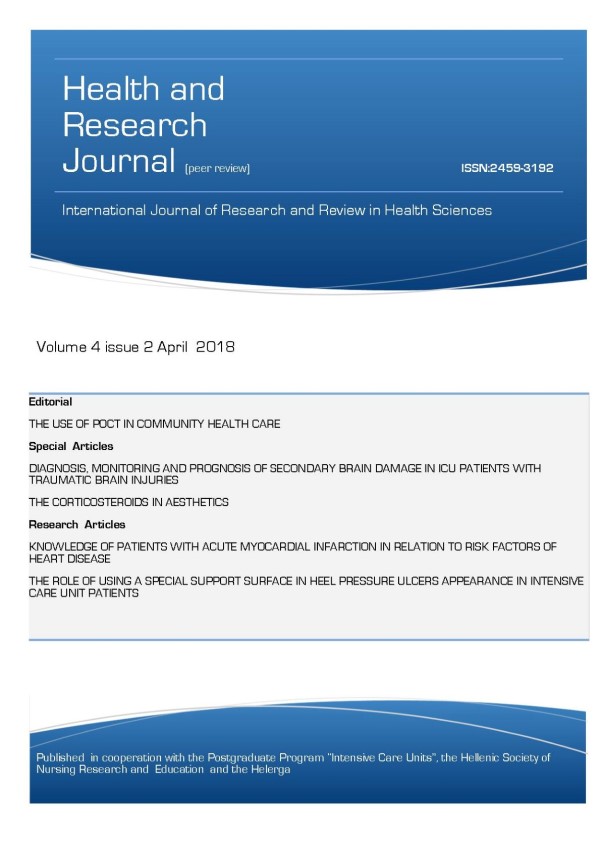
Abstract
Article Details
- How to Cite
-
Karabekiou, E., Kadda, O., Marvaki, C., & Routsi, C. (2018). The role of using a special support surface in heel pressure ulcers appearance in intensive care unit patients. Health & Research Journal, 4(2), 99–116. https://doi.org/10.12681/healthresj.19228
- Section
- Original Articles
Copyright notice:
The journal "Health and Research Journal" reserves the rights for copyright of the content of the website and also the copyright of the articles published.
By virtue of their appearance in this journal, the articles are free to be used for non-commercial purposes. However, the articles cannot and must not be used in anyway, published elsewhere or modified without any reference to the author and the first publication of the article.



